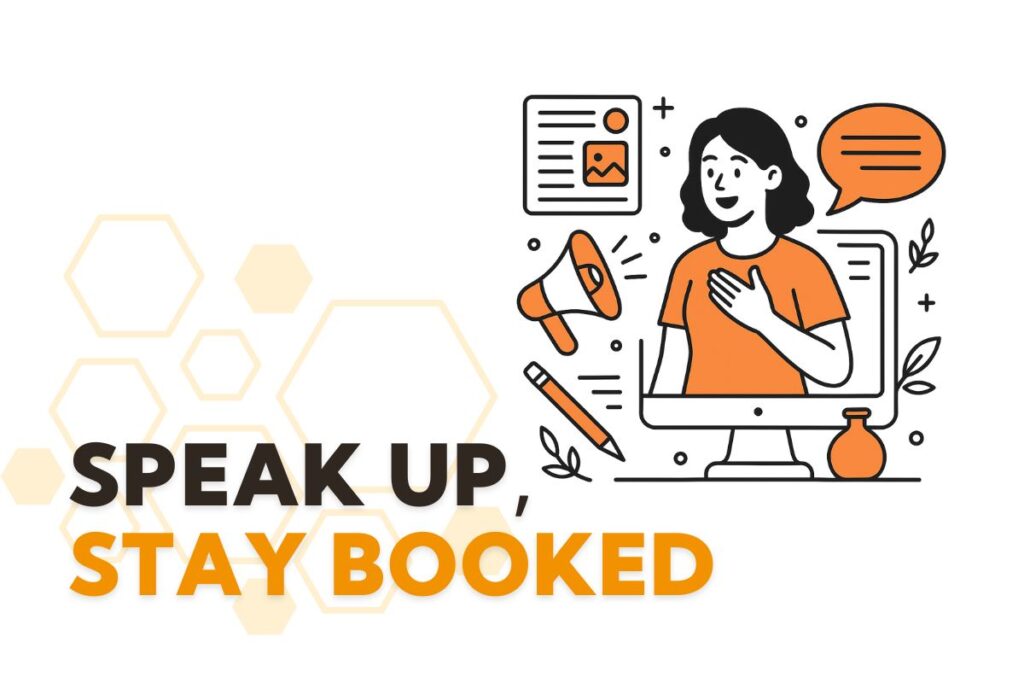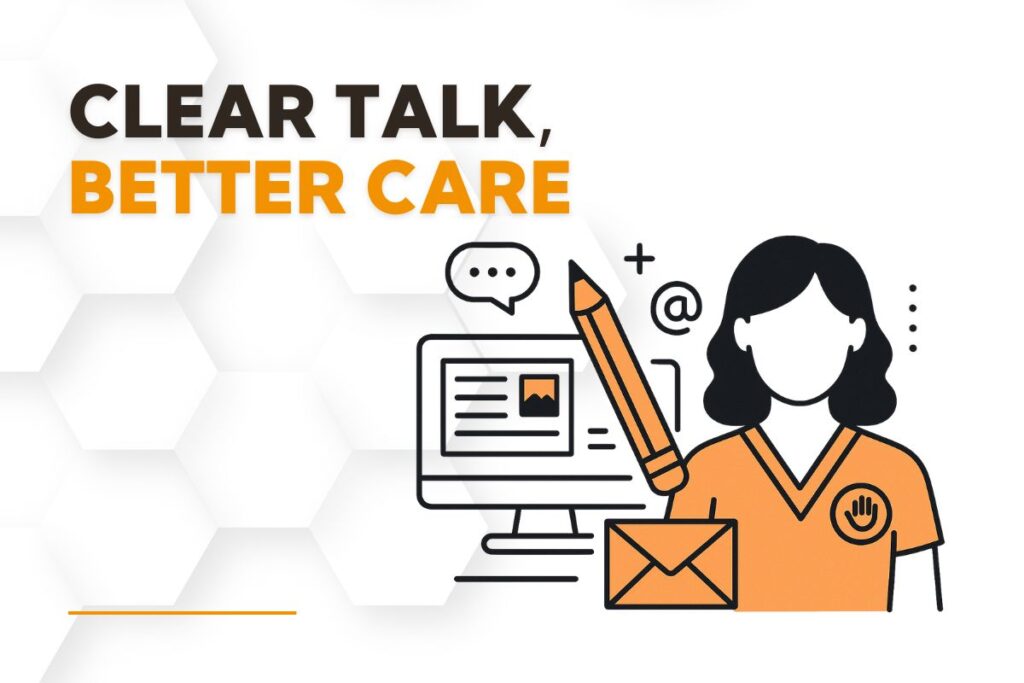Clear communication in your massage clinic can make or break a client’s experience. Nearly 70% of massage clients don’t return after their first visit—and unclear communication is often the cause. From intake to aftercare, inconsistent messaging can lead to unmet expectations, misaligned treatments, and a breakdown in trust. For therapeutic massage clinic owners, mastering communication isn’t optional. It’s essential to your success.
This guide will walk you through where communication commonly breaks down, how to fix it, and how to build lasting client relationships with clear, consistent processes. You’ll also discover why clear communication in your massage clinic strengthens both client loyalty and staff confidence.
Why Clear Communication Matters More Than Ever
In a busy massage clinic, communication gaps aren’t always obvious. A therapist might misunderstand a client’s pressure preference. A receptionist might misinform someone about pricing or insurance. These issues, while seemingly minor, can result in client discomfort, complaints, or lost business.
Clients today expect more than just a great massage. They want to feel seen, heard, and understood at every stage of their visit. Clear communication in your massage clinic ensures clients feel supported and understood from the moment they book to the moment they leave. When your team communicates well, clients stay longer, book more often, and refer others.
Pinpointing Where Communication Breaks Down
Booking and Front Desk Interactions
This is your first impression—and it matters. When clients call, text, or book online, they expect accurate information about availability, treatment types, and cost. Staff who aren’t equipped with clear answers risk setting false expectations.
Intake and Pre-Treatment Conversations
Many clients don’t know how to express what they need. If your team skips the intake form or rushes the conversation, crucial details like past injuries or pain areas may be missed. Clear communication in your massage clinic must start with this vital step.
During the Session
Therapists sometimes hesitate to check in during treatments, worried about breaking the client’s relaxation. But without pressure checks or clarification, clients may silently endure discomfort. Consistent communication throughout the session ensures clients feel safe and cared for.
Aftercare and Rebooking
After a session, a client might receive no guidance on next steps. Without clear recommendations or encouragement to book again, they leave feeling satisfied—but disconnected. This is another point where clear communication in your massage clinic can make a lasting impression.

Foundations of Effective Communication
Active Listening
Clients want to feel heard. Active listening means repeating back key concerns, confirming goals before treatment begins, and noticing non-verbal cues like facial tension or body language. These habits help therapists connect more deeply with clients and tailor treatments to their needs.
Simplifying Language
Massage terminology can be confusing. Using clear, accessible language when explaining treatment types, results, and expectations helps clients feel more comfortable. For example, “deep tissue” may mean different things to different clients—so always clarify.
Empathy Without Overstepping
It’s important to validate how a client feels while staying within your scope of practice. Therapists should be trained to respond supportively without offering medical advice. This helps build rapport without creating liability or confusion.
Consistency Across the Team
Every team member should communicate using the same tone, vocabulary, and protocols. When a client hears different policies from different people, it creates confusion and mistrust. Clear communication in your massage clinic starts with a shared internal language and clear boundaries.
Documented Policies and Boundaries
Set clear expectations with documented policies on cancellations, lateness, rebooking, and treatment types. This helps avoid misunderstandings and empowers staff to answer questions confidently.
Tools and Tactics for Clear, Repeatable Communication
Use Standardized Intake Forms
Digitized intake forms capture key details before the client arrives. These should include the primary reason for the visit, medical history, pressure preferences, and any areas to avoid. When collected consistently, this information helps every therapist start each session with clarity.
Establish Session Checklists
Therapists benefit from structured conversations. By confirming treatment goals, reviewing pain points, asking about pressure and temperature, and offering a moment for questions, they reduce the chance of confusion and discomfort. These touchpoints are subtle but powerful ways to maintain clear communication in your massage clinic.
Provide Training Through Role-Play
Ongoing training helps staff feel confident in handling nuanced conversations. Create opportunities for role-playing common scenarios like clarifying unclear client requests, addressing out-of-scope expectations, or walking through insurance or payment discussions. Role-play allows staff to practice and refine responses in a low-stakes setting.
Automate Communication Touchpoints
Client-management tools can deliver timely, helpful messages that enhance client experience. Appointment reminders with preparation tips, post-session follow-ups with aftercare advice, and educational emails explaining different treatment types all contribute to clearer communication.
Navigating Real-World Communication Challenges
Misaligned Treatment Expectations
A client might book a relaxation massage but arrive expecting deep tissue results. If the therapist doesn’t clarify beforehand, the client may leave disappointed. Receptionists should confirm treatment goals during booking, and therapists should review them again during intake to ensure everyone is aligned. Clear communication in your massage clinic can prevent these disconnects before they begin.
Discomfort During a Session
A client may find the pressure too intense but choose not to speak up, and the therapist might not check in. A brief mid-session check-in and a reminder at the start that feedback is welcome can prevent this kind of miscommunication.
Frustration Over Cancellation Fees
Some clients are surprised to see a charge for a missed appointment. To avoid this, your cancellation policy should be presented during booking, confirmed in follow-up messages, and displayed clearly on your website and intake forms.
Sensitive Personal Disclosures
Occasionally, a client may disclose emotional or trauma-related information during a session. Therapists should be trained in trauma-informed care, which includes staying grounded, listening without judgment, and gently redirecting the session as needed.

How to Know If Your Communication Is Working
Track Key Client Metrics
Look at your retention rate, rebooking frequency, and client feedback. Fewer complaints and more positive reviews often point to clearer communication. Trends in cancellations or client churn can also reveal breakdowns you might be missing.
Gather Staff Feedback
Invite your team to share where they feel communication falls short—whether it’s clients showing up confused about services or unclear policies causing stress. Their insight can help you adjust processes before they become larger issues.
Ask Clients for Input
Use brief surveys to ask clients about their experience. Did they feel heard? Was the treatment aligned with their goals? Was anything confusing? Their answers will help you pinpoint areas to refine and reinforce your commitment to clear communication in your massage clinic.
Strengthen Client Trust With Clear, Compassionate Messaging
In a therapeutic massage practice, your ability to communicate clearly can be just as important as your hands-on skills. Clients remember how they felt in your space—not just physically, but emotionally.
By investing in better communication systems, training, and tools, you’re not just preventing misunderstandings. You’re laying the groundwork for stronger client relationships, a more confident team, and a business that grows through trust and word-of-mouth.
FAQs
That’s common. The goal isn’t to change personalities, but to create shared language and protocols. Standardized scripts and checklists help unify your client experience.
Start small. Introduce one new process at a time—such as intake improvements or pressure check-ins. Use role-play and team debriefs to make learning practical.
Train your team to scan forms before the session and ask clarifying questions. You can also use digital forms that require certain fields to be completed before submission.
Not at all. Automated messages free up time and reduce human error while still feeling personal. Use warm, human language in all automated messages to keep the tone consistent with your brand.



